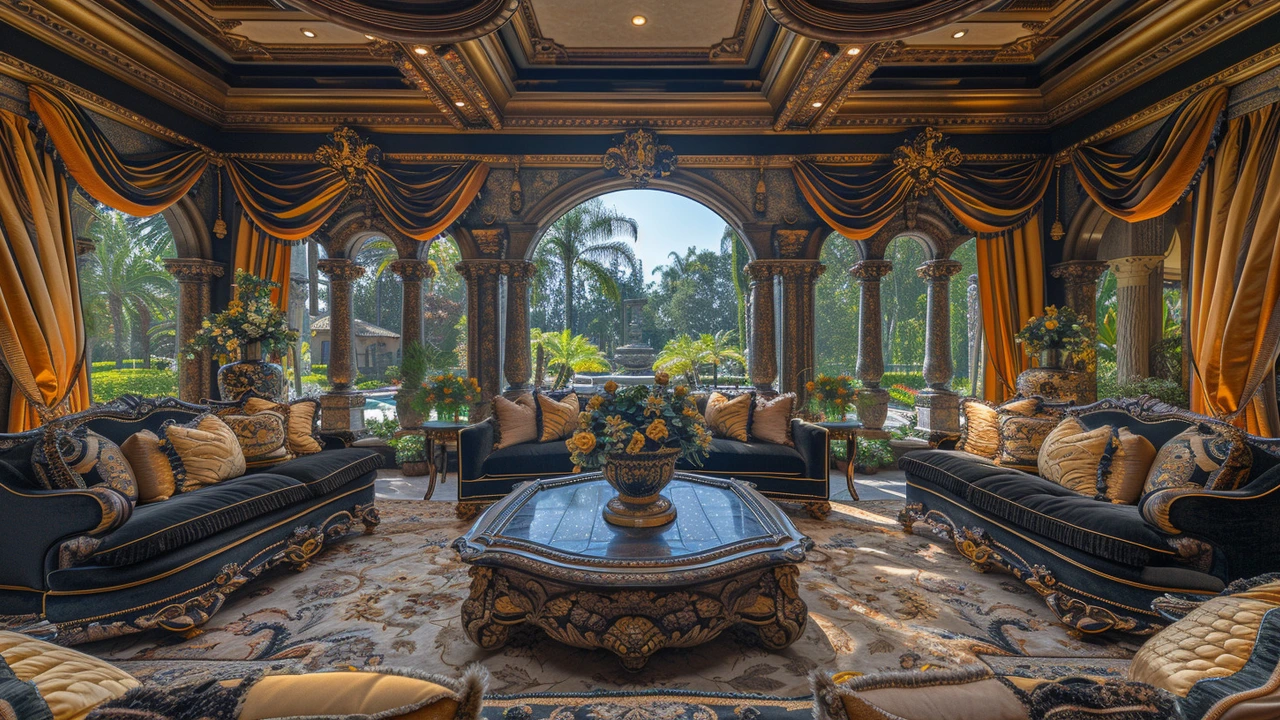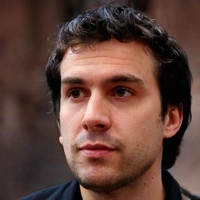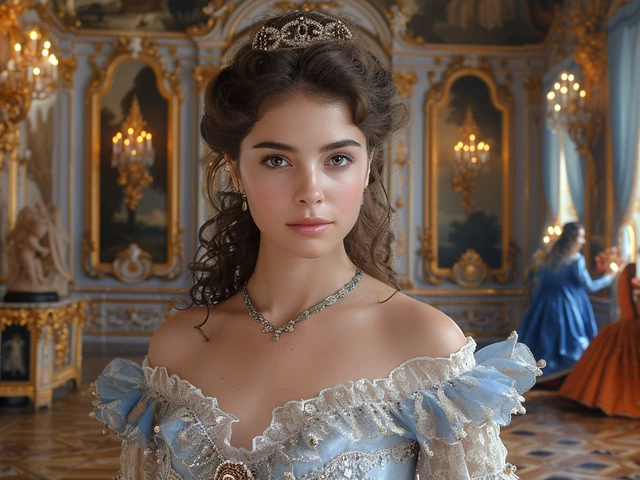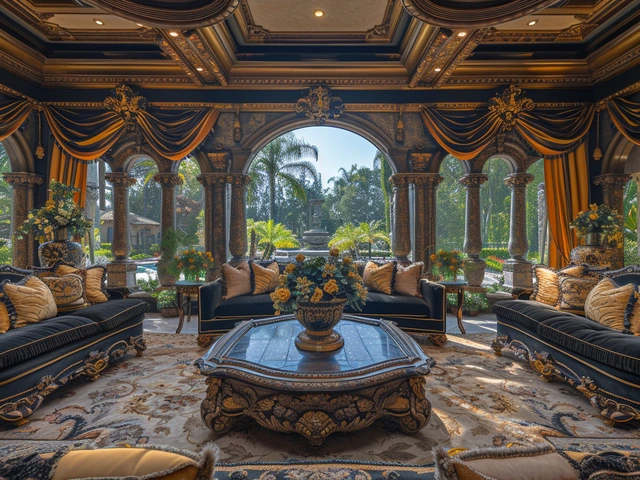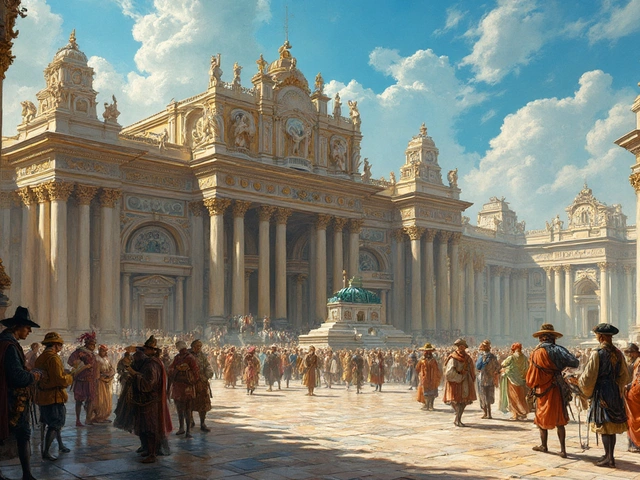The Dawn of Rococo
Let me take you on a journey, a voyage through time…to the eighteenth century to be precise. This was the shimmering age of Rococo, a period when art was drenched in extravagance, lightness, and elegance. A time when even the simplest of moments were adorned with an excessive coat of beauty, much like my spouse, Lydia, getting decked up for an evening out, each ribbon, each dab of perfume making her shine a little brighter—a testament to the influence of Rococo in our daily lives.
Rococo, an art movement originating in France in the early 18th century, is characterized by gaiety, grace, and the fondness for curving forms. At its core, it's about a shift from more serious decorative and fine arts towards light-hearted and frivolous themes. Those who dismiss Rococo as frivolous and shallow, I insist, are missing the point. It's not just about the ethereal shells and intricate foliage. It is also about capturing fleeting moments of beauty, fleeting like the bubbles children blow on a sunny afternoon.
The Heart of Rococo: Versailles
Rococo wasn’t born in a simplistic and modest cabin. No, it was born in the heart of extravagance, Versailles, where King Louis XV resided. Once I was lucky enough to visit Versailles on a school trip way back, and even years later, I can’t help but compare its grandeur to a majestic peacock, flaunting its feathers. My fellow art enthusiasts, you simply can’t escape the Rococo style at this place! The palace is an architectural masterclass of how ambient light, decorative yet natural forms, and a palette of superficial colors can be blended into an atmosphere of whimsical delight.
Rococo Rising: Transition from Baroque
Now, to get a better understanding of Rococo, envision a pendulum, swinging from heavy Baroque to lighter Rococo. From the serious religious themes of Baroque, filled with drama (no less than my wife’s favourite soap opera, I must add), art gradually moved towards depicting amorous yet gentle worldly pursuits. To put it plainly, it reigned in the thunderstorms of erstwhile Baroque and mellowed down with pastel hues, loose brushwork and a passion for capturing the intimate details of everyday life.
Rococo Reimagined: Decorative Arts
One of Rococo’s greatest feats is the way it influenced decorative arts, transforming mundane items into artistic wonders. Now, this sounds a lot like Lydia's culinary wizardry, but imagine it in the realm of art! From ornate mirrors to tapestry, from furniture to porcelain, Rococo breathed life into them, with its characteristic asymmetry, serpentine lines and intricate, delicate details. Just as I can reinvent a once-favorite suit with a different tie, so Rococo gave decorative arts a new charm by introducing novelty and creativity.
Interactions With Light: An Important Rococo Element
At this point, I must pour special emphasis on one of Rococo's most defining attributes: its treatment of light. Light isn't just light in the realm of Rococo. It is the stroke of a drama-laden paintbrush, an exaggeration of shadows and reality alike. An artist depicting light shimmering on a stream may not just be painting a rural scene, but capturing the fleeting sparkle of human life itself. A Rococo artist, in essence, becomes a Visual Wordsworth, seeing the world in a grain of sand and a heaven in a wildflower.
End of Rococo but Not Its Influence
Like every good thing, Rococo, too, had an end. Neoclassicism arrived, waving its banner of reason and intellect, while Rococo, the dreamy damsel, gracefully made her exit. But remember, folks, even after the sun sets, its glow lingers in the horizon. Similarly, the influence of Rococo refused to fade away from the tapestry of art history. Its influence continued, peeping through the architectural styles of Victorian England or echoing in the impressionistic landscapes of Monet and Renoir.
Rococo Today: The Living Art
So how does Rococo fare in today’s world, you ask? Like Lydia's age-old, but still funny, jokes, Rococo's charm simply refuses to fade away. Be it fashion, interior design, architecture or even literature, the elements of Rococo are here to stay. Every ruffle on a dress, every pastel-themed cafe, every lyrical novel is just a modern reinterpretation of Rococo, refusing to subside in the pages of history, and instead breathing in the very world around us.
Embrace Your Inner Rococo
A final thought as I conclude my art-filled journey, imagine embracing your own version of Rococo. Unveil your inner artist, fill your homes with pastel-colored trinkets, add some asymmetrical flourishes to your fashion, and throw in a curve or two into your daily life scenarios. Rococo, the art style that refused to fade away, becomes a testament to the human spirit itself, to our never-ending, sky-high creativity that paints our world in pastel hues of joy.

